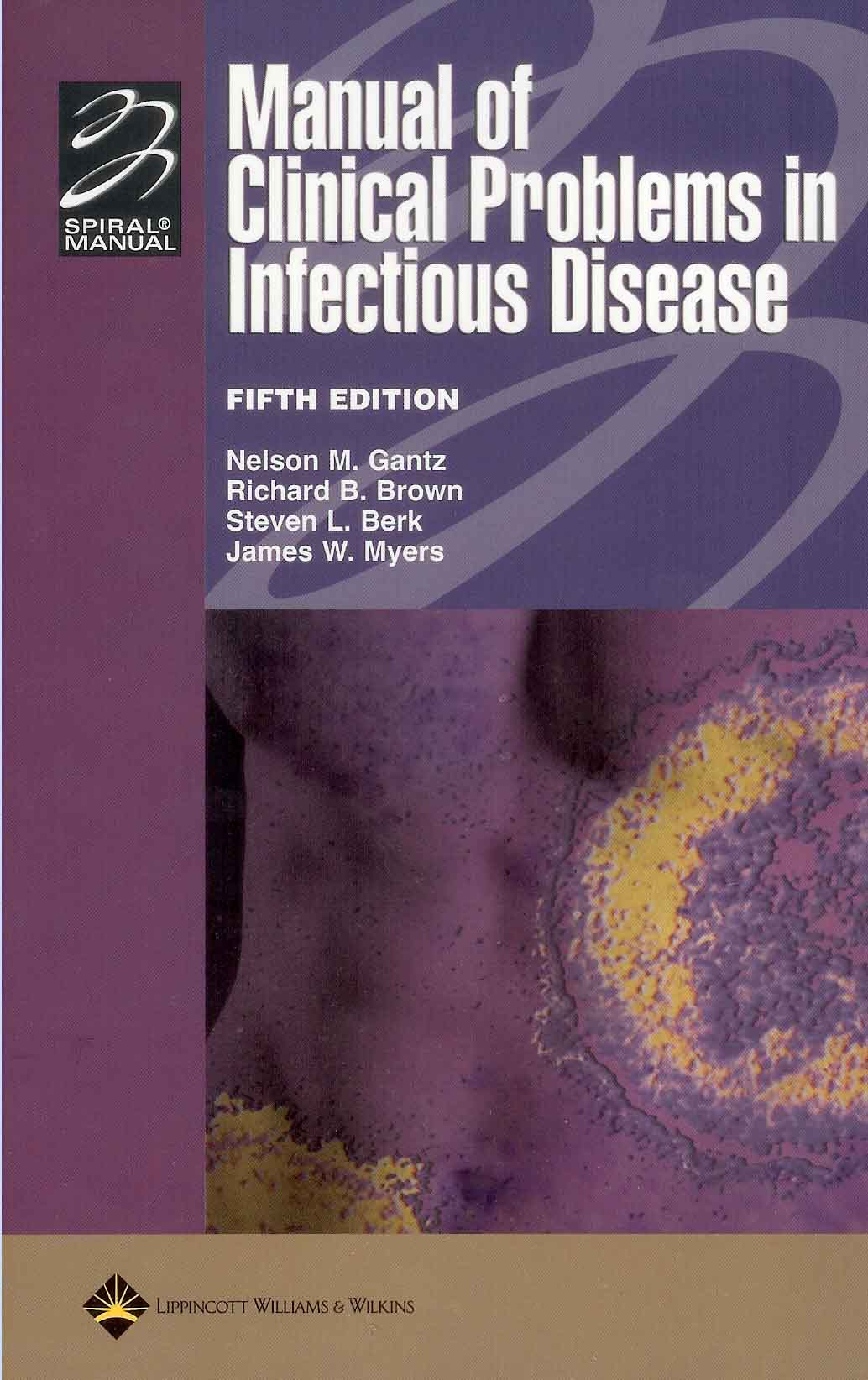Preface
Acknowledgments
I Upper Respiratory Tract
1 Tonsillopharyngitis in Adults 3
2 Sinusitis 8
3 Infectious Mononucleosis: Many Faces of a Common Disease 13
II Lower Respiratory Tract
4 Acute Bronchitis 21
5 Antibiotic-resistant Pneumococci 24
6 Fever and Pleural Effusions 27
7 Pneumonia in the Intensive Care Unit 34
8 Community-acquired Pneumonia in the Geriatric Patient 42
9 Disease Caused by Legionella pneumophila and Chlamydia pneumoniae
46
III Cardiovascular System
10 Infective Endocarditis: Diagnostic Criteria 57
11 Culture-negative Endocarditis 61
12 Surgery in Active Infective Endocarditis 64
13 Endocarditis Prophylaxis 68
IV Gastrointestinal System
14 Filling Defects of the Liver 77
15 Granulomatous Hepatitis 82
16 Community-acquired Peritonitis 85
17 Infections of the Hepatobillary Tract 92
V Urinary Tract
18 Urinary Tract Infections: Basic Principles of Therapy 101
19 Cystitis Versus Pyelonephritis: Localizing Urinary Tract
Infections 103
20 Asymptomatic Bacteriuria 106
21 The Significance of Pyuria 109
22 Prostatitis 111
23 Complicated Urinary Tract Infections 115
24 Candiduria 119
VI Genital Tract
25 Urethral Discharge 125
26 Serologic Tests for Syphilis 129
27 Pelvic Inflammatory Disease 134
28 Therapy of Genital Herpes 138
29 Vaginitis 143
VII Nervous System
30 Analysis of Cerebrospinal Fluid 151
31 Central Nervous System Infections in the Compromised Host 157
32 New Onset of Facial Paralysis 162
33 Acute Infections of the Central Nervous System 167
34 Chronic Meningitis 176
35 Guillain-Barre Syndrome 182
VIII Bones and Joints
36 Vertebral Osteomyelitis 189
37 Infections of Prosthetic Joints 193
38 Fever and Joint Pain 198
IX Skin and Soft Tissue
39 Infectious Disease Indications for Hyperbaric Oxygen Therapy 205
40 Lyme Disease - A Diagnostic Challenge 209
41 Cellulitis and Other Skin and Soft-Tissue Infections 215
X Bacteremia
42 Gram-negative Bacteremia and the Sepsis Cascade 223
43 Methicillin-resistant Staphylococcus aureus 229
44 Coagulase-negative Staphylococci 234
45 Vancomycin-resistant Enterococci 237
XI Fever
46 The Febrile Patient without an Obvious Source of Infection 245
47 Fever and Prosthetic Heart Valves 248
48 Prolonged Fever and Generalized Lymphadenopathy 253
49 Fever and Skin Rash 256
50 Fever and the Renal Transplant Recipient 264
51 Fever Following Travel Abroad 270
52 Hyperpyrexia and Hyperthermia 276
53 Fever in the Granulocytopenic Patient 282
54 Fever of Unknown Origin 288
55 Chronic Fatigue Syndrome 293
XII Immunity
56 Management of the Patient with Suspected [beta]-Lactam Allergy 303
XIII Nosocomial Infections
57 Postoperative Fever 311
58 Urinary Catheter-related Infections 316
59 Hospital-acquired (Nosocomial) Pneumonia 322
60 Management of the Employee with a Needlestick Injury 328
61 Hepatitis C 336
XIV Zoonoses
62 Human Infections Following Animal Bites 345
XV Newly Appreciated Infections
63 New and Increasingly Recognized Pathogens 351
XVI Prophylaxis of Infection in Travelers
64 Prophylaxis of Infectious Diseases in Travelers 357
XVII Tuberculosis
65 Role of the Tuberculin Skin Test 365
66 Isoniazid Chemoprophylaxis: Indications and Management 370
67 Chemotherapy of Tuberculosis 376
XVIII Selected Laboratory Procedures
68 Laboratory Report of a Gram-negative Rod in the Blood 385
69 Blood Culture Growing a Gram-positive Rod 389
70 Stool for Ova and Parasites 392
71 Antimicrobial Susceptibility Tests 395
72 Special Tests of Antimicrobial Activity in Infectious Diseases 400
XIX Antimicrobial, Antiviral, Antiparasitic, and Antifungal Agents
73 Principles of Antimicrobial Therapy 407
74 Choosing a Cephalosporin 410
75 Single Daily Dosing of Aminoglycosides 414
76 Antimicrobial-associated Colitis 417
77 Perioperative Antimicrobial Prophylaxis 421
78 Antifungal C


